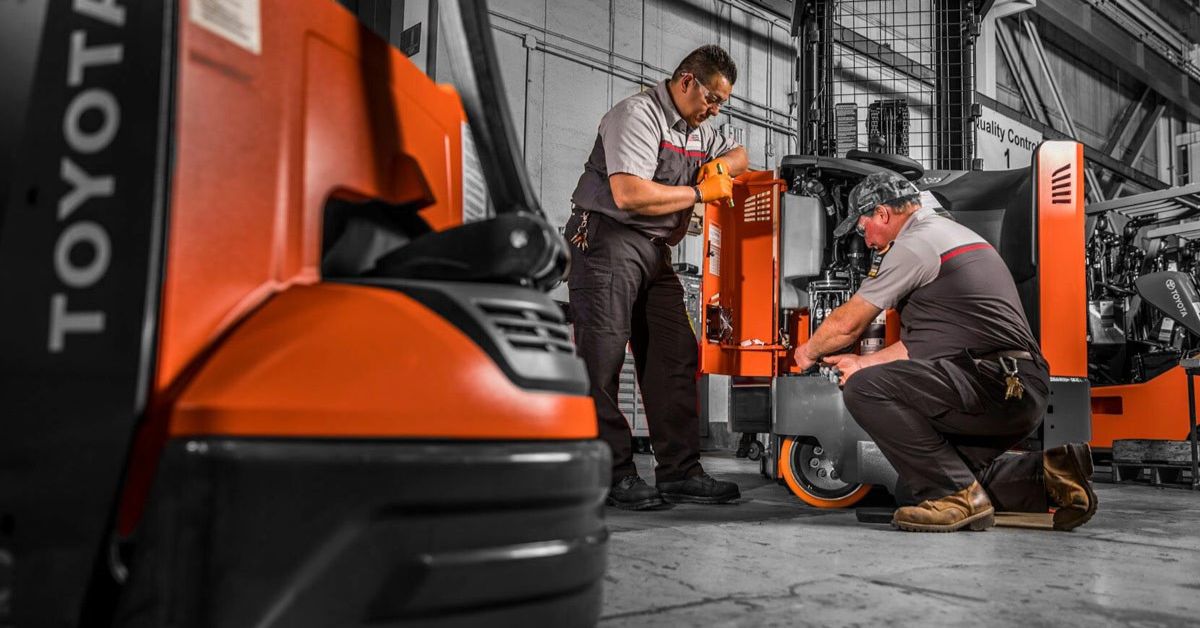Forklift Servicing: Essential Practices for Optimal Performance and Safety
Forklifts are indispensable assets in warehouses, manufacturing plants, and distribution centers. They facilitate the efficient movement of goods, thereby enhancing productivity. However, like all machinery, forklifts require regular maintenance to ensure their longevity, safety, and optimal performance. This article delves into the importance of forklift servicing, best practices, and the role of professional servicing providers.
Understanding Forklift Servicing
Forklift servicing refers to the routine maintenance and repair activities performed on forklifts to ensure they operate efficiently and safely. These services encompass a range of tasks, including:
- Daily Inspections: Checking the forklift’s condition before use.
- Scheduled Maintenance: Regular servicing based on manufacturer recommendations.
- Repairs: Addressing any issues or malfunctions that arise.
- Upgrades: Implementing improvements to enhance performance.
Regular forklift servicing is crucial for preventing unexpected breakdowns, ensuring compliance with safety standards, and extending the lifespan of the equipment.
Importance of Regular Forklift Servicing
1. Enhances Safety
Regular servicing helps identify and rectify potential safety hazards, such as faulty brakes or worn-out tires. Ensuring that all components function correctly reduces the risk of accidents and injuries in the workplace.
2. Improves Efficiency
Well-maintained forklifts operate more efficiently, leading to increased productivity. Tasks such as lifting and transporting goods are performed more swiftly, minimizing downtime.
3. Reduces Operational Costs
Preventive maintenance can identify issues before they become major problems, thereby reducing the need for costly repairs. Regular servicing also ensures optimal fuel efficiency, lowering operational expenses.
4. Complies with Legal Requirements
In many jurisdictions, regular forklift servicing is mandated by law. Adhering to these regulations helps businesses avoid legal repercussions and potential fines.
Best Practices for Forklift Servicing
1. Conduct Daily Inspections
Before operating a forklift, it’s essential to perform a daily inspection. This includes checking:
- Tires: Ensure they are properly inflated and free from damage.
- Brakes: Test functionality to ensure they respond promptly.
- Hydraulic System: Check for leaks or signs of wear.
- Lights and Horns: Verify that all safety features are operational.
- Forks: Inspect for cracks or deformation.
Documenting these inspections helps in tracking the forklift’s condition over time.
2. Follow Manufacturer’s Maintenance Schedule
Each forklift model comes with a manufacturer’s maintenance schedule, detailing recommended service intervals and tasks. Adhering to this schedule ensures that all necessary maintenance activities are performed timely, preventing premature wear and potential breakdowns.
3. Use Quality Replacement Parts
When replacing parts, always opt for high-quality, OEM (Original Equipment Manufacturer) components. Using substandard parts can compromise the forklift’s performance and safety.
4. Train Operators
Proper training ensures that forklift operators handle the equipment safely and efficiently. Well-trained operators are less likely to misuse the forklift, reducing the risk of accidents and wear.
5. Keep Detailed Records
Maintaining comprehensive records of all servicing activities, including inspections, repairs, and parts replacements, helps in tracking the forklift’s maintenance history. These records are valuable for warranty claims and resale purposes.
Choosing a Professional Forklift Servicing Provider
While some businesses may opt for in-house maintenance, partnering with a professional forklift servicing provider offers several advantages:
- Expertise: Trained technicians possess the knowledge and skills to diagnose and repair issues accurately.
- Convenience: Professional providers offer scheduled services, reducing downtime.
- Comprehensive Services: They often provide a range of services, including emergency repairs, parts replacement, and upgrades.
When selecting a servicing provider, consider factors such as reputation, experience, and the range of services offered.
Conclusion
Regular forklift servicing is vital for ensuring the safety, efficiency, and longevity of your equipment. By adhering to best practices and partnering with reputable servicing providers, businesses can maximize the benefits of their forklifts, leading to enhanced productivity and reduced operational costs. Remember, a well-maintained forklift is not just a piece of equipment; it’s a valuable asset that contributes to the overall success of your operations.







